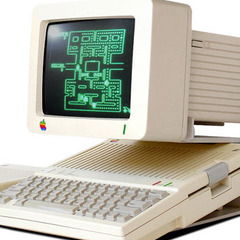-
Posts
198 -
Joined
-
Last visited
Awards
This user doesn't have any awards
About BlargKing
- Birthday Aug 18, 1994
Profile Information
-
Gender
Male
-
Location
NewBrunswick, Canada
-
Occupation
3D Artist
System
-
CPU
Core i7-4930K
-
Motherboard
ASUS X79 Deluxe
-
RAM
4X4GB G.Skill Sniper DDR3-1600
-
GPU
2X GeForce 780Ti
-
Case
NZXT H440 White
-
Storage
750GB SSD, 4TB HDD
-
PSU
Corsair RM1000
-
Display(s)
2X ASUS PA248Q 24" 1920X1200
-
Cooling
NZXT Kraken X61
-
Keyboard
Corsair Vengance K70
-
Mouse
Corsair Raptor M45
-
Operating System
Windows 8.1
Recent Profile Visitors
1,019 profile views
BlargKing's Achievements
-
Dug through the system logs, apparently when I'm "shutting down" for whatever reason its entering sleep mode, then almost immediately resuming from sleep mode about 4 seconds later, and then it just goes silent for about half an hour, and then logs a system time change with the reason "system time synchronized with the hardware clock", after which it checks the firmware boot settings and connects to the Ethernet, and then the final log before I forced it to shutdown was "The system has returned from a low power state" and reports "Wake source unknown". Further up, theres a kernal boot status that just says "The last shutdown's success status was false. The last boot's success status was true". So something seems to be preventing Windows from properly shutting down when I tell it to.
-
So but of an odd thing happening, but for the last week my PC has been turning itself on randomly at night, every night. This just started out of nowhere, I haven't touched any settings in Windows or the BIOS at all. I thought it might be some weird wake on LAN thing or a perhipheral (even though I've got all the same stuff attached that was here before this started), but I dug through the BIOS and couldn't even find an option to enable/disable any wake on lan function. I also considered there might be malware of some sort on my machine, but a full system scan with Bit defender turned up nothing (although thats no guarantee I know), but my computer isn't acting odd in any other way, so I don't think its malware. Additionally, this only happens when I shut down my PC through start, power, shutdown. If I force my PC off by holding down the power button, it wont start up on its own. I could just re-install Windows, but I would rather not as I just did that a few months ago. Full rundown of my setup: ASUS X-99A/USB3.1 motherboard Core i7 5960X 4X4GB Mushkin DDR4-2133 memory Samsung 1TB SATA SSD 4X WD Black 1TB HDD EVGA GeForce 780 Ti Corsair RM1000 PSU Perhipherals: 1 Dell monitor connected via DVI 1 ASUS monitor connected via DisplayPort Razer BlackWidow Ultimate 2014 edition keyboard Razer Deathadder 2013 mouse Blue Snowball USB microphone Seagate USB 3 external hard disk Any suggestions are greatly appreciated
-
Okay, so despite me installing the Intel provided driver, apparently Windows decided to keep using its own generic Ethernet driver, and when I clicked "update driver" it loaded the Intel driver instead of the Microsoft one and now it works fine. Gawd Dayum Windows. Why you do this to me. Guess I should have checked more closely which driver it was using. It said it was using "Intel 1218-V driver" but when I dug deeper I saw it was from Microsoft, not Intel. Ugh. Well I appreciate the help anyway. Thanks.
-
Checked, it shows up as a gigabit connection. I don't have flash so I cant use the non beta speedtest. But I tried Netflix's speed test (fast.com) and it shows the same results. Did a packet loss test, it didn't lose any packets. I've checked the cable, it works completely fine on my laptops Ethernet connection. I can't plug my modem direct to my PC as the modem is a fiber optic terminal, and its locked to only connect to the router provided by Bell.
-
I did that twice. Once with the driver off ASUS, once with the driver right from Intel. Neither made a difference.
-
Unfortunately I dont. All I've got are computers with built-in Ethernet. Is there anyway to do an in-depth test of the Ethernet controller through software?
-
So out of the blue, my Ethernet connection has become uselessly slow, but only for downloads. I've been using this Ethernet setup for 6 months without issue up until now. This is the speed I got over Ethernet: This is the speed over WiFi: I have no idea how this has happened, and I've tried everything I can think of. I checked the cable for physical damage, and found nothing (Its a 200 foot length). To see if it was the cable or the router, I plugged it in to my laptop, but on my laptop the speeds over Ethernet are nearly identical to the speeds I get over WiFi. So that rules out the cable/router as the culprit. I checked the Ethernet port on my motherboard, but theres no bent pins or any sign of physical damage. I wiped my Ethernet drivers and re-installed them, but that didn't change anything. As far as my OS can tell, the Ethernet controller is working fine. I really have no idea what the issue could be or why it appeared suddenly. Using WiFi is really not a long-term option, as I'm stuck with the trash "ActionTek" router that Bell gave me, and it has horrible latency for online games. Additional Info: I'm using the Ethernet jack/controller built in to my ASUS X99-A/USB 3.1. According to the spec sheet its an Intel® I218V, 1 x Gigabit LAN Controller. Thanks.
-
I'm trying to get my rig set up to view and edit HDR content, and right now I'm stuck on what I should do for a display. Theres very few HDR computer monitors out as of now, the only one I can find being the Dell UP2718Q that Linus recently reviewed, but that monitor costs a meaty 1600$ which is beyond my ability to afford. I was wondering how well a 4K HDR television might stack up as an editing display. Theres a decent looking 44" Sony 4K HDR tv at my local bestbuy for 700$. Its a bit big, but that also means I have a lot of screen to edit on. I figure since these are the displays that HDR content is going to be displayed on anyways that the color accuracy should be sufficient, and I've got an LCD calibration tool to help bring it in line anyways. Thoughts?
-
Thats good then. I imaging the architecture doesn't really matter much since all the drivers get bundled together anyways.
-
Does it have to be the same GPU architecture though? I would hate to buy a Pascal Quadro only to find it doesn't work with my Kepler GeForce.
-
Yeah. I color grade in Premiere Pro so ideally I would have my video viewport on the 10-bit display being run off the Quadro.
-
Not talking about SLI/Crossfire. Just running 2 cards separately in the same machine.
-
Hello I was wondering if it was possible to have both a GeForce and a Quadro GPU in the same PC running under the same instance. The reason I ask is my college has some fancy new cameras that shoot HDR video, and I wanted to try setting up my PC to be able to view and edit HDR content. Since 10-bit color is a requisite, obviously a GeForce 780 TI isn't going to work, so I was thinking of slotting in a base line Quadro card and connecting that up to a 10-bit display and use that for my color grading. I've tried googling this, but all the info I can find is old and conflicting. Some results say you need to use a Quadro from the same architecture as the GeForce, while others say it doesn't matter. Ideally I would like to use a Quadro P400, but if I have to stick with Kepler to match my 780 TI then I'll have to use a Quadro K420, or would it be worth the extra 80$ for a Quadro K620? I don't plan on using the Quadro to do any heavy lifting, as I can still use the 780 TI for GPU compute. I basically just need a card that can spit out 10-Bit color for HDR. Thanks!
-
Hello, A couple days ago I bought myself a used Surface Pro 3 tablet, and it still has Windows 8.1 on it. I was wondering if anyone here had experience upgrading a Surface to Windows 10, and if its worth upgrading to. Specifically, I'm wondering if theres any features specific to the Surface interface in Windows 10 that offer a better experience than Windows 8.1 does. Thanks!
-
You can print gold-coloured filament or resin. There *might* be some filament or resin with gold suspended in it. There are 3D printers that can print metal, but those are well beyond anything a consumer can buy. If your a strong DIY type, you could print the object you wanted gold in plastic, make a mould of it, and then cast that mould with gold. You could also send the 3D file of the object to a print service. I know Shapeways can do prints either cast entirely of precious metal, or they can plate the object with a precious metal.





